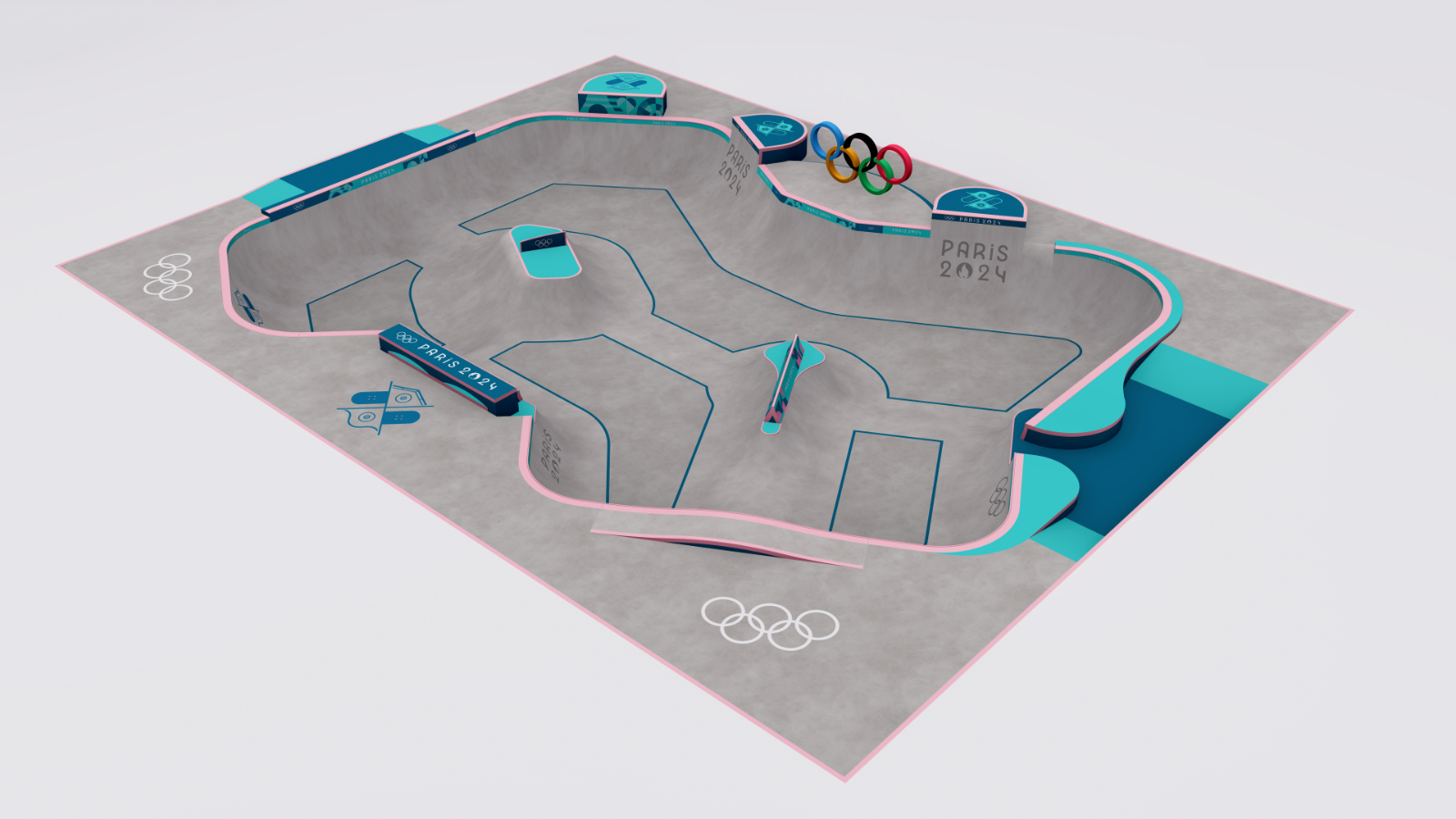There can be few activities where the design of space can contribute to the shaping of culture more than skateboarding. Different ways of skateboarding grew up around the terrains which expressive youth either found or created upon which to do it. You could consider skatepark design the opening of the songbook from which each of the musicians plays. To design the Paris Olympic Games Skateboarding Street and Park spaces, then, is not only an honour but an undertaking of no small enormity.
What are the criteria that govern design?
What are the limitations?
What is the ongoing impact of these designs on progression within skateboarding?
With the unveiling of the Paris designs for both Park and Street, we have sought to unpick the various strands of thought which are involved in reaching a consensus that we have the best Fields Of Play for everyone involved.
(SEE THE DESIGNS IN DETAIL HERE!)
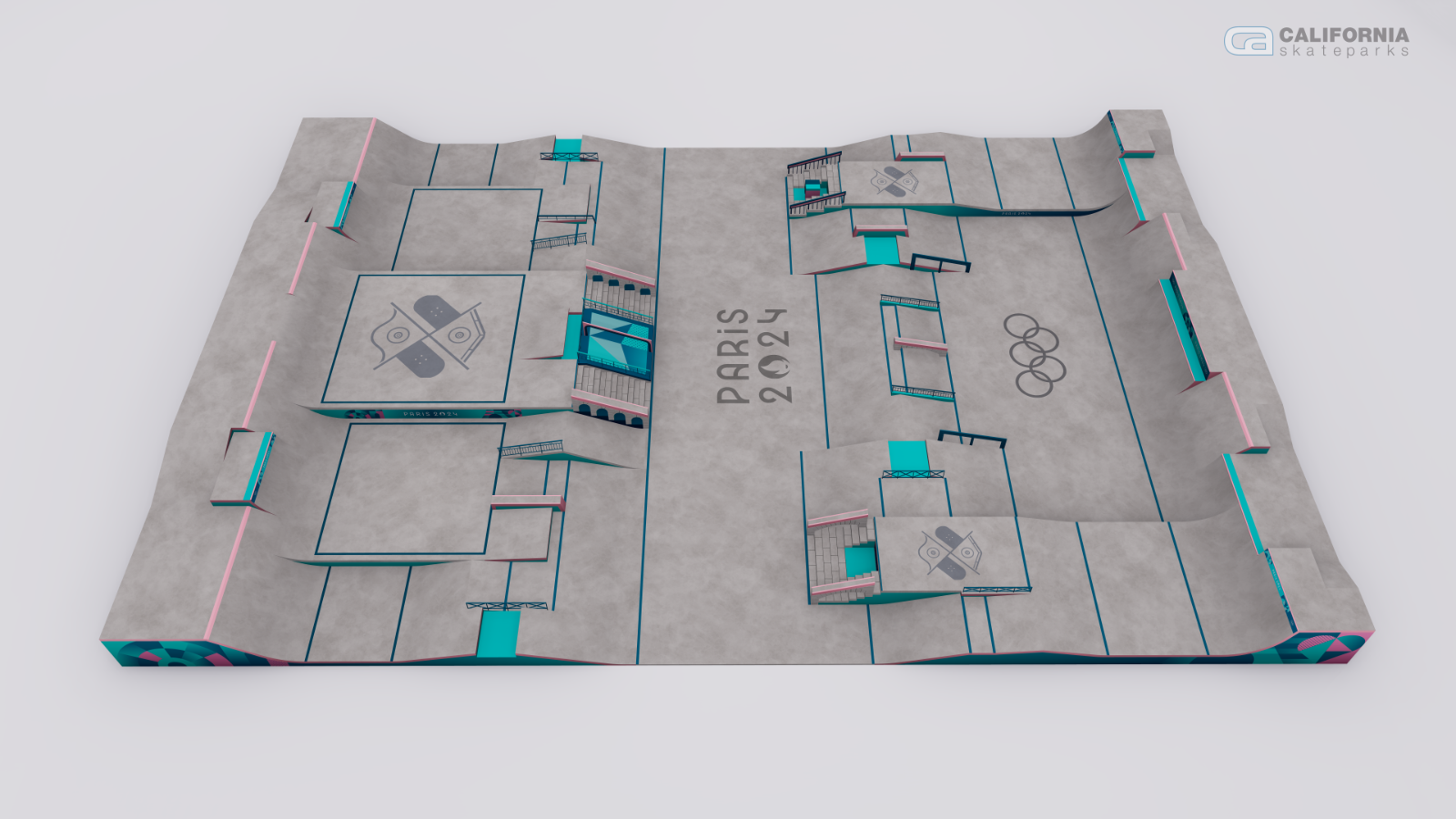
Getting Started
But before we get into the design side, let’s go back in time to the organizational side. The Organising Committee of the Olympic Games (OCOG) is created over 4 years in advance of each Olympic Games, so World Skate were in touch with Paris 2024 even before the Tokyo Olympic Games to discuss possibilities.
Being the most official of official skateparks, the Olympic FOPs are, of course, certified by the International Federation. This means they must adhere to World Skate Certification rules. This document is actually the starting point for the entire process of creating the Olympic Skatepark; it covers everything from footprint and heights to materials and design quality criteria. It's the reference document which all stakeholders involved use to ensure everything aligns perfectly and the best possible choices are made at any step.
The type of materials employed to build the skatepark came next, and as by the certification rules concrete surface was chosen as the material of choice for street and park within set ratios which allowed for a residual part of the rolling surface to be built using ‘other materials’. While being located in one of the most important public squares in the world has its plus sides, the necessity of having temporary skateparks was made clear by the Organising Committee since day one- and, with it, also the need for designing and building facilities which could be relocated easily and turned into legacy infrastructure within France.
With all the above assumptions and references, it was time for the OCOG to issue a call for tender and select the winning company to deliver the jobs of designing AND building the Olympic FOPs.
Sooner written than done, it wasn’t before the first quarter of 2023 that all the pieces fell into place to have the first design meeting undertaken by World Skate, Paris 2024 Organising Committee and California Skateparks. A little more than a year later, the first beam was erected in Place de la Concorde, and the construction process begun.
One upshot of that early engagement is the size of the skateboarding footprint on the Place de la Concorde - both Courses are around a third bigger than usual in terms of square footage, compared to the average arena-style competition skatepark. This choice allowed for extra features which by extension means more line possibilities and trick scenarios- a factor which goes toward the governing principle of ‘fair and equal’.
The following article provides insights on the choices and the process of conceptualizing and designing the Olympic FOPs as highlighted through conversations with Luca Basilico (Sb Director at World Skate) and Joe Ciaglia (Head Designer and President of California Skateparks).
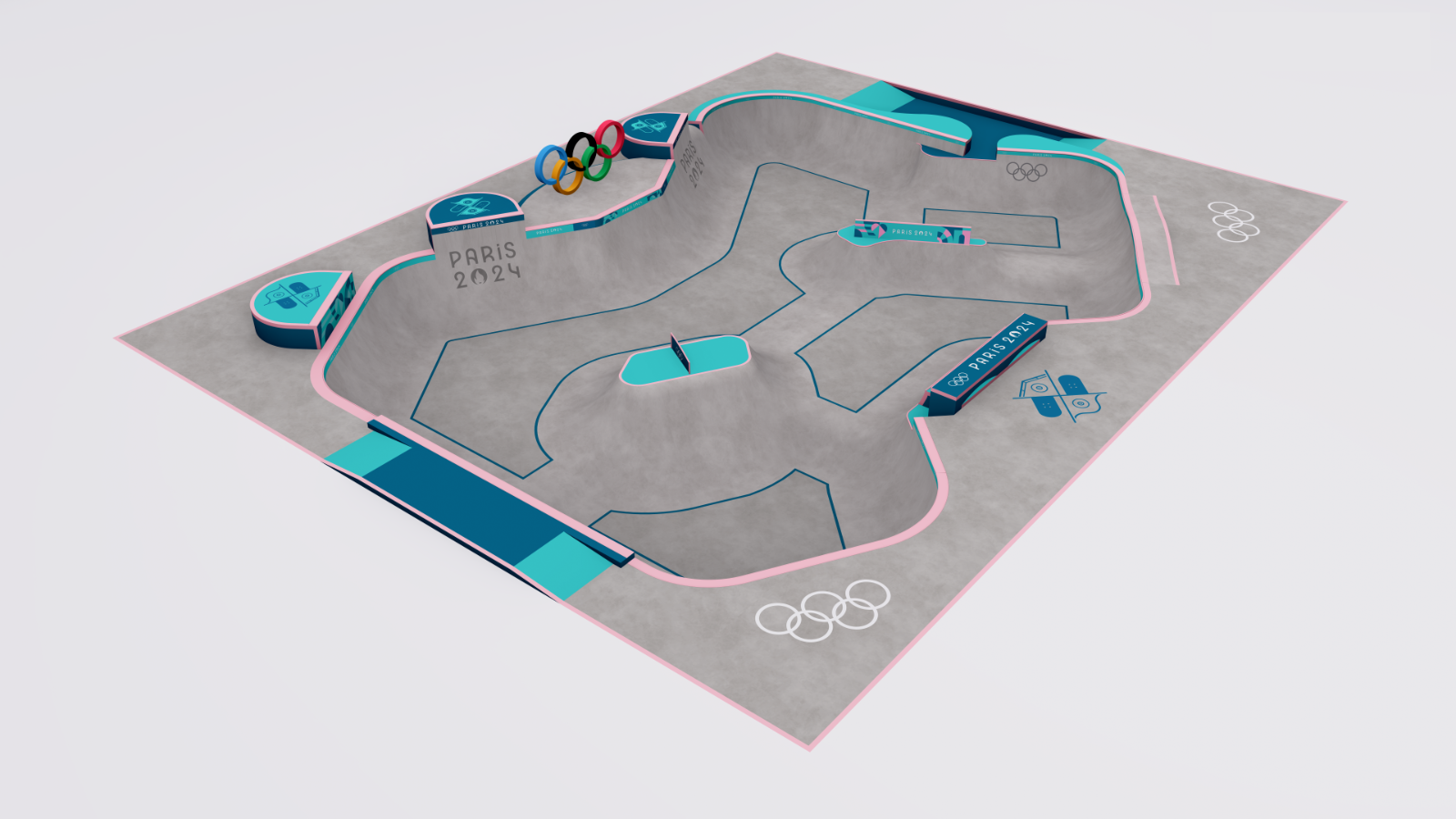
'Fair and equal'
One of the things which makes World Skate unique is that our events are not invitationals.
Even with the Olympic Games, since both national and continental IOC quota rules must be observed, there will still be a noticeable spread of ability between the skater who qualified in first and twenty-second place. For that reason, each World Skate FOP contains elements which are accessible as well as those which are more challenging.
As Joe Ciaglia, Head Designer at California Skateparks in charge of the FOP design and build, observes:
“Because of limitations placed on continents and countries you aren’t necessarily getting the, say, top twenty on the course at any one time. So if you make it too hard and too risky, then its not fair to the people who don’t have the skill set for that- but you can’t tone it down enough that it hurts the guys who want the bigger risk. It’s hard to find that balance.”
You may also notice that the Paris street FOP does not have the enormous 12-stair rails which Tokyo featured for this reason- the rationale that the biggest feature would accrue the largest points has been eschewed in a course which has several focal points.
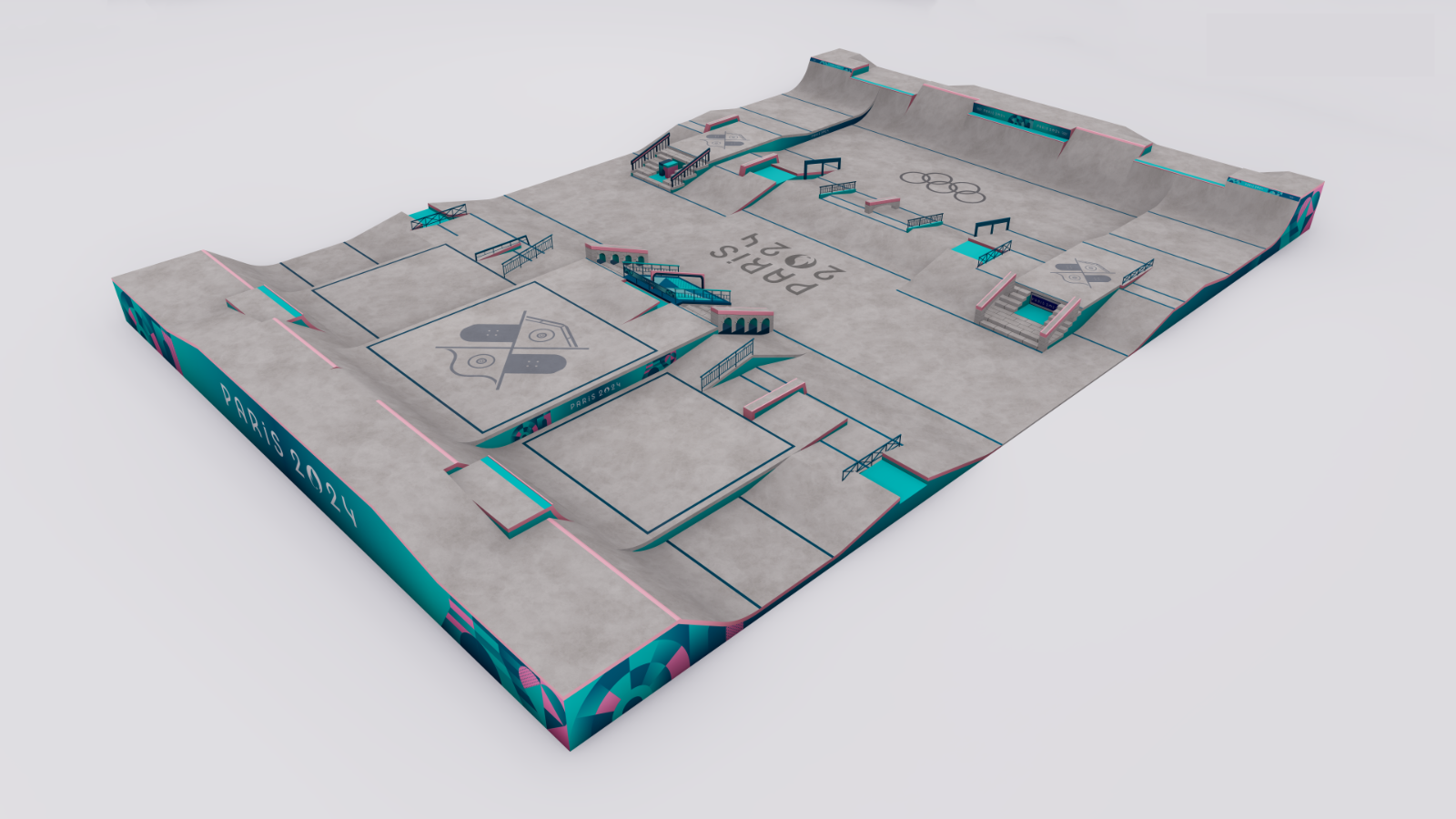
Olympic Legacy
There is a secondary consideration within the parameters of Olympic skatepark design which extends beyond making them both accessible and challenging for participants: the trickle-down effect. There can be no denying at this point that the inclusion of skateboarding in the Olympic Games has boosted investment in facilities at governmental level in many countries.
Particularly in nations where the first serious facilities investment has been made because of Olympic inclusion, then replicating features of the competitive terrain is a given. What is seen at the Olympics will inevitably inform the decision making around the design process at national level all around the world. This is another reason why everything is not just made bigger all the time.
As World Skate’s Skateboarding Director Luca Basilico sees it:
“For countries who are developing skateparks right now, and who first encountered skateboarding through competition and the Olympics, they are definitely taking what is being built for the Olympics as, let’s say, ‘the sacred word’. So we have to be careful, because at some point what happens with the Olympics impacts on what kids get to skate around the globe. That’s also the reason why the Street Course in Paris has been shrunk a little in terms of height.”
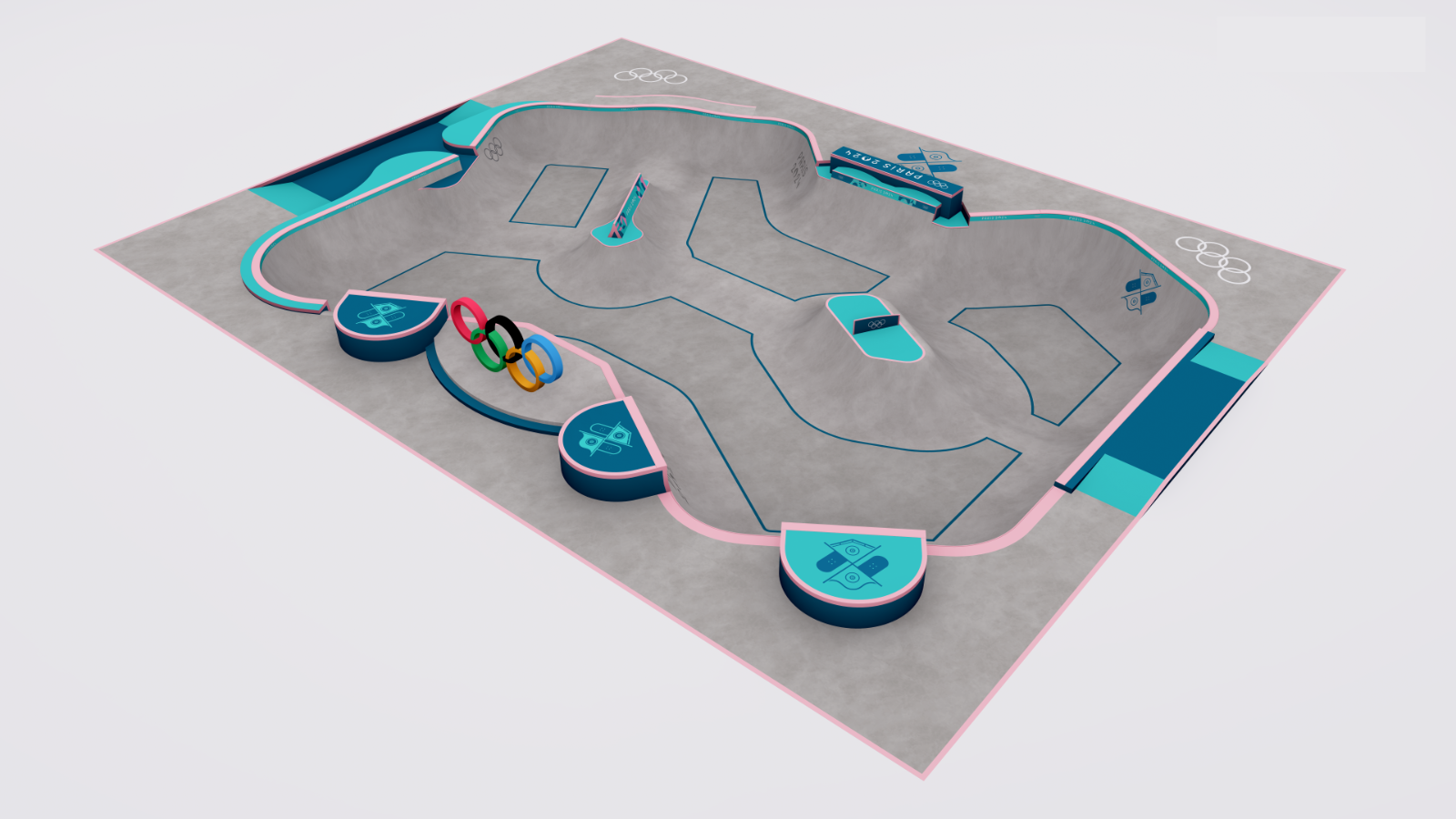
Competing Dynamics
So within those competing dynamics, a consensus has to be reached between Paris 2024, who have none other than OG French skateboarding legend Stephane Larance as their Sports Manager for Skateboarding, and World Skate’s Working Group for Design.
In Park specifically, the challenge lay in creating interconnected transitions of both greater and lesser sizes which would not only allow everyone to perform to the best of their abilities, but also allow the more advanced skaters to use those spaces in more ambitious and creative ways. Luca Basilico again:
“The challenge… is to create obstacles that are approachable for every level and put them in the layout where better skaters can see opportunities to skate smaller obstacles in lines, or in different ways by approaching them from different angles- and still leaving them open for challenges to skaters who are more technically advanced. That’s how difficult it is to design: ‘What is the angle which allows the smaller obstacles to merge with the bigger ones while still having a skatepark which is enjoyable for everyone?’”
Those results now lie before you and will be brought to life by 88 of the world’s most exciting skateboarders from each of the continents in a global celebration of all that is wonderful about skateboarding, over the course of two weeks in the French capital this mid-summer 2024.
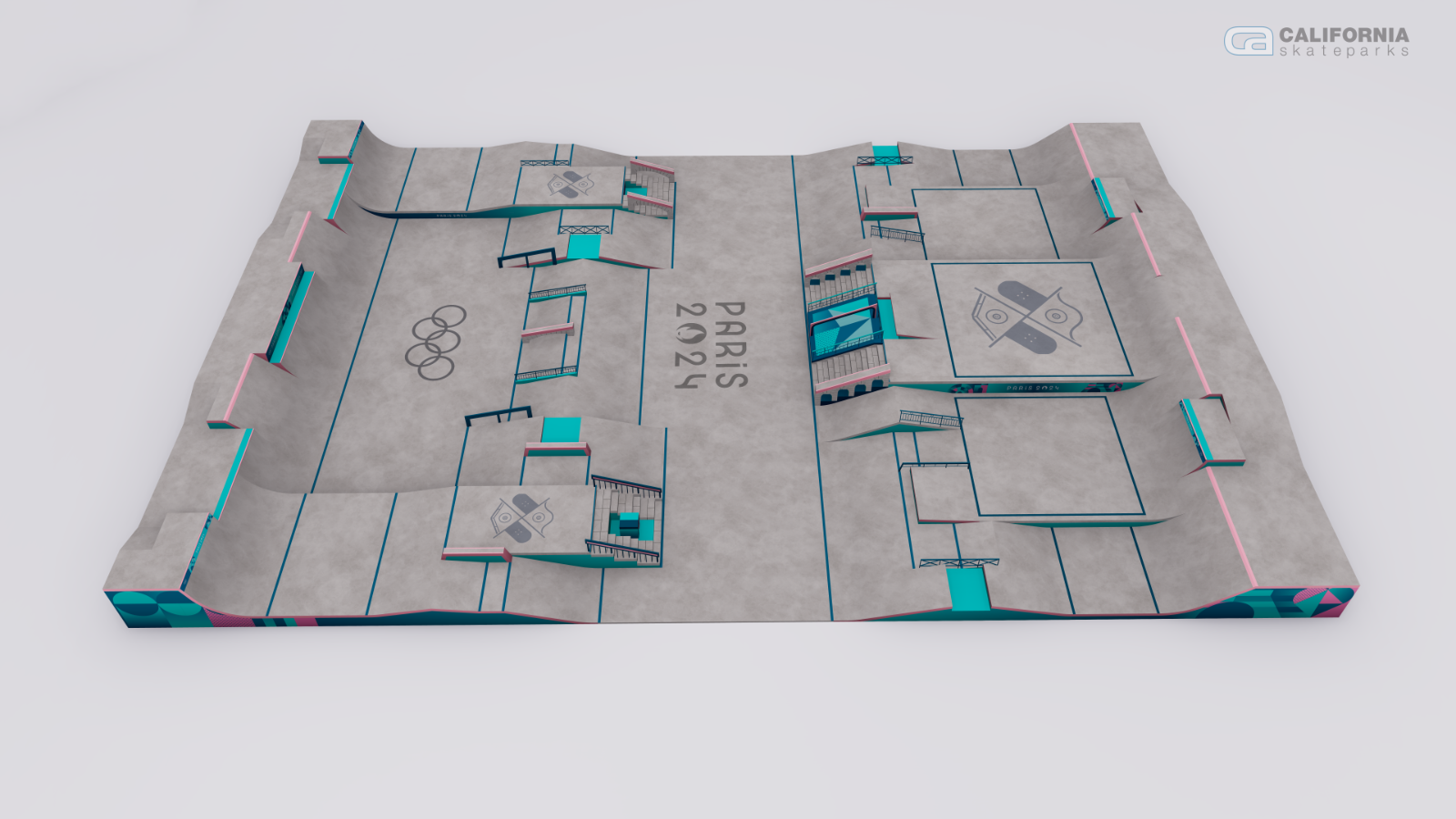
Can't Please Everyone Equally
It is, of course, impossible to please everybody in such matters. With so many (literally) competing perspectives involved, perhaps pleasing everyone is not the point. What it comes down to is trying to find a nexus between all the criteria which allows everybody to give of their best and allow skateboarding at this level a platform on which to progress in real time.
As Joe Ciaglia signs off his thoughts on coming to a consensus dynamic that works for everybody equally:
“… some will say ‘Bigger, bigger, bigger’, some guys will say ‘It's getting too big’- so we have to be the neutral guys in the middle, somewhat. We actually have to say ‘This is what we believe is correct’- so we have to stand by it. If somebody asks me “Why’d you do this or this”- I can give them an answer: this is what we did, this is why we did it; based on the consensus, based on the criteria. Maybe it's not the best for you- but it's the best for everybody, collectively.”
